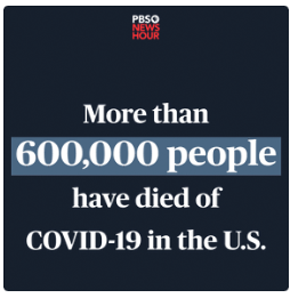Health Plan Weekly
-
News Briefs
✦ The Biden administration on July 1 released a regulation that takes the first step toward implementing the No Surprises Act, which bans surprise medical billing. The rule, which was the subject of fierce lobbying from various industry stakeholders, lays out most of the patient protections from surprise out-of-network bills that will take effect on Jan. 1, 2022, “including obligations for payers, providers and regulators,” Loren Adler, an associate director of the USC-Brookings Schaeffer Initiative for Health Policy, wrote on Twitter. The regulation also details how to calculate the “qualifying payment amount” that “plays a substantial role in determining” the minimum out-of-network payment from plan to provider, he noted. In addition, the rule took aim at policies unveiled by major insurers that retroactively deny certain emergency room claims if a visit is deemed non-emergent, saying “these practices are inconsistent with the emergency services requirements of the No Surprises Act and the ACA.”
✦ Daniel Tsai, who previously served as assistant secretary for MassHealth and Medicaid director in Massachusetts, is the new deputy administrator and director of CMS’s Center for Medicaid and CHIP Services. Tsai played a key role in Massachusetts’ Section 1115 waiver program, which “implemented one of the most at-scale shifts to value-based care in the nation,” CMS said in a June 28 news release. “Through the waiver, MassHealth also launched a unique program committing significant investments for nutritional and housing supports to address the social determinants of health for high cost, at-risk individuals,” the agency said.

-
Medicaid MCO Enrollment Soars During COVID-19 Pandemic
Over 64.4 million people were enrolled in Medicaid managed care programs as of June 2021, representing a 19.4% increase from 53.9 million enrollees in April 2020, according to AIS’s Directory of Health Plans. MCO enrollment growth rates across the nation have been accelerating since the start of the pandemic, ranging from a 9.5% increase in Tennessee between June 2020 and June 2021 to a 35.1% rise in Nebraska during that same period. Eleven states saw enrollment increases of more than 20% year over year.
-
Report Urges Better Network Adequacy for Cancer Patients
For the 1.3 million Americans living with blood cancers, their already daunting condition is not made any easier by the fact that private health plans — particularly those on the Affordable Care Act exchanges — often exclude National Cancer Institute (NCI)-designated treatment facilities from their provider networks, according to a new analysis.
The report, produced by Manatt Health and The Leukemia & Lymphoma Society, focused on four states’ policy and regulatory frameworks governing marketplace plans, with researchers conducting interviews with state regulators, insurers and cancer care providers to learn about “policy challenges that may hamper patients’ ability to navigate and obtain proper treatment for their cancer.”

-
Addressing High Cost of Childbirth Care May Be a Tall Order
Across the U.S., about 2 million individuals with private insurance are admitted to the hospital each year for childbirth. It’s the No. 1 cause of hospitalization in the nation, and it’s also the cause of significant out-of-pocket health care costs, with an average bill of about $3,000, according to a paper published in June in the Official Journal of the American Academy of Pediatrics.
For one in six childbirths, the out-of-pocket cost exceeds $5,000, the University of Michigan-based researchers noted. The average bill for newborns who are admitted to the neonatal intensive care unit is also $5,000, with one in 11 bills exceeding $10,000 for NICU care. Only 5% of patients had their hospital stay for childbirth covered in full by insurance.

-
Biden Admin Backs New SEP, but Is Adverse Selection a Worry?
The Biden administration on June 28 made good on its previous pledge to roll back certain Trump-era regulations regarding the Affordable Care Act exchanges when it issued a proposed rule that CMS deemed a “continuation” of the already finalized two-part Notice of Benefit and Payment Parameters for 2022. But the most consequential part of the proposal, experts say, wasn’t a policy reversal so much as a new idea that federal health officials want to try on for size: offering a monthly special enrollment period (SEP) for a select group of individuals.
“To provide more opportunities for certain low-income consumers to access premium-free or very low-cost coverage made available by the American Rescue Plan Act of 2021, we are proposing to provide Exchanges the option to implement a monthly SEP” for people with a household income no greater than 150% of the federal poverty level (FPL), CMS said in a fact sheet outlining the proposed rule’s provisions.












